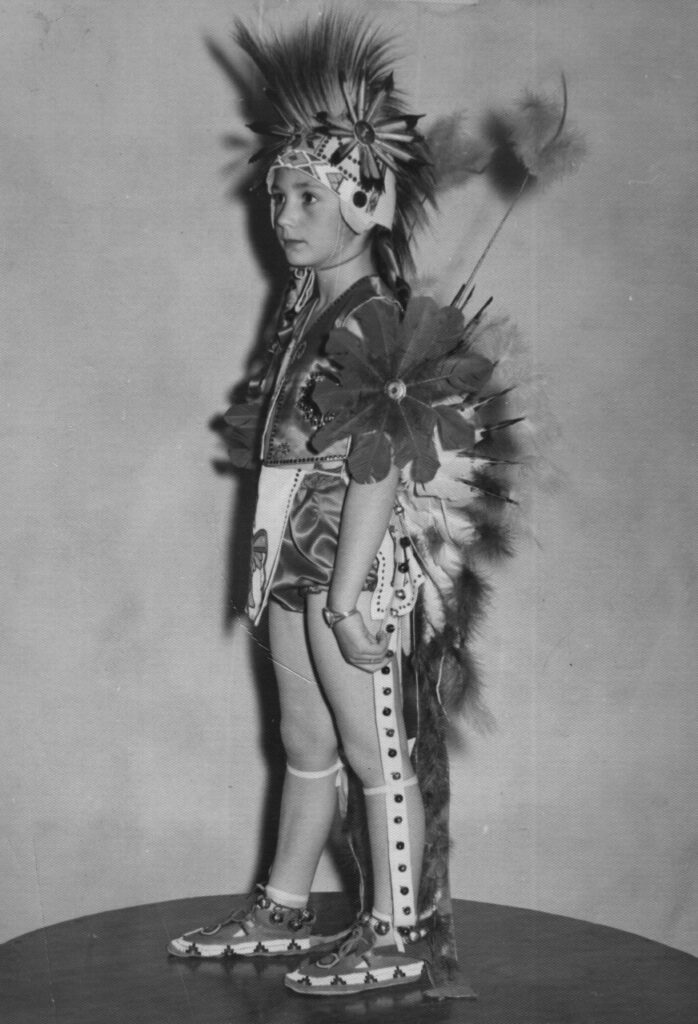
OSAPANA POWHATAN
born James Ridgley Whiteman
James Ridgley Whiteman was born January 15, 1910 in Portales, New Mexico. He was the first son of Levi J. and Katherine Greathouse Whiteman. Ridgley's father came to New Mexico in 1902, his mother in 1907, both pioneers in Eastern New Mexico.
Ridgley spent his boyhood years at Portales and Clovis. He had joined the Boy Scouts in Clovis in 1925. His interest was outdoor scouting and Indian lore. Ridgley’s mother had collected arrowheads while growing up in Ohio near the Big Serpent Mound and she had a large collection. From this, Ridgley's interest turned to bows and arrows and Indian crafts. In fact, James Ridgley was the first Boy Scout in New Mexico to get a Basket Maker badge. Ridgley was one of the first Boy Scouts at Camp We-Hin-Ah-Pay in the southern mountains of New Mexico and spent many summers contributing to the development of the camp program.
1910
1925



1929
1935
James Ridgley’s greatest accomplishment (and what he is probably most famous for) occurred in 1929 at age 19 when he became the first to discover the Clovis Man site, between Clovis and Portales. This was an ancient river bed Ridgley had stumbled across while exploring the New Mexico frontier. Here is where he found ancient arrow heads carved out of prehistoric animal bones that dated 13,500 years (now called Clovis points). These Clovis points are still considered the oldest artifacts ever discovered in North America and one of the most important discoveries in the 20th century. These Artifacts can still be viewed at the Smithsonian Museum and the National Geographic Society recognized his earth shattering find in its magazine in December of 2000.
Ridgley Whiteman married Rachel Merie McCarty on Aug. 25, 1935 in Clovis, NM. Children to this union were James Mac, Katherine Lou, and Scott Fleming. In the year of our Lord, 2001, Ridge and Merie’s offspring number 3 children, 11 grandchildren, and over 25 great-grandchildren.
At age 27 Ridgley had carved a place among New Mexico’s greatest artists as a member of the elite WPA Art Project in the late 1930s. Today (2001) he is one of only six WPA artists still living in New Mexico, out of a total of 162.
In 1939 he was Scout Master. His interests in Indian lore and Indian crafts continued into adult life and are reflected both in his vocation and avocation. Ridgley spent 20 years as an Indian at Knott’s Berry Farm at Buena Park, California. There he learned the craft of jewelry manufacturing. And that is a craft that would be passed down for 5 generations. From him, to his grandson Jeremiah and later Jeremiah would pass that same craft down to his grandsons Tyler & Nathan Hartman.
1937
1939

After retirement in 1972 Ridgley and Merie moved back to Clovis, New Mexico. Both taught painting in Fort Sumner, Melrose, and Clovis. Ridgley taught Indian lore to members of several Boy Scout troups. Ridgley taught his grandson, today called Jeremiah, making of silver and turquoise jewelry. Ridge was active in the Hi-Plains Muzzle Loaders and Black Powder Club and went on many “ron-d-voos,” living as they did prior to 1840. Involved with him was his daugher Kathy and Don McAlavy, son Keevy and several of Ridge’s great-grandkids. This group kept alive the Mountain Men traditions, trading, costumes, trapping and shooting. Ridge continued his Indian crafts such as jewelry and flute making at the home of Kathy and Don McAlavy in 1992, until he went blind in 2000. Two eye surgeries in Oct.-Nov., 2001 did not help.
1972













